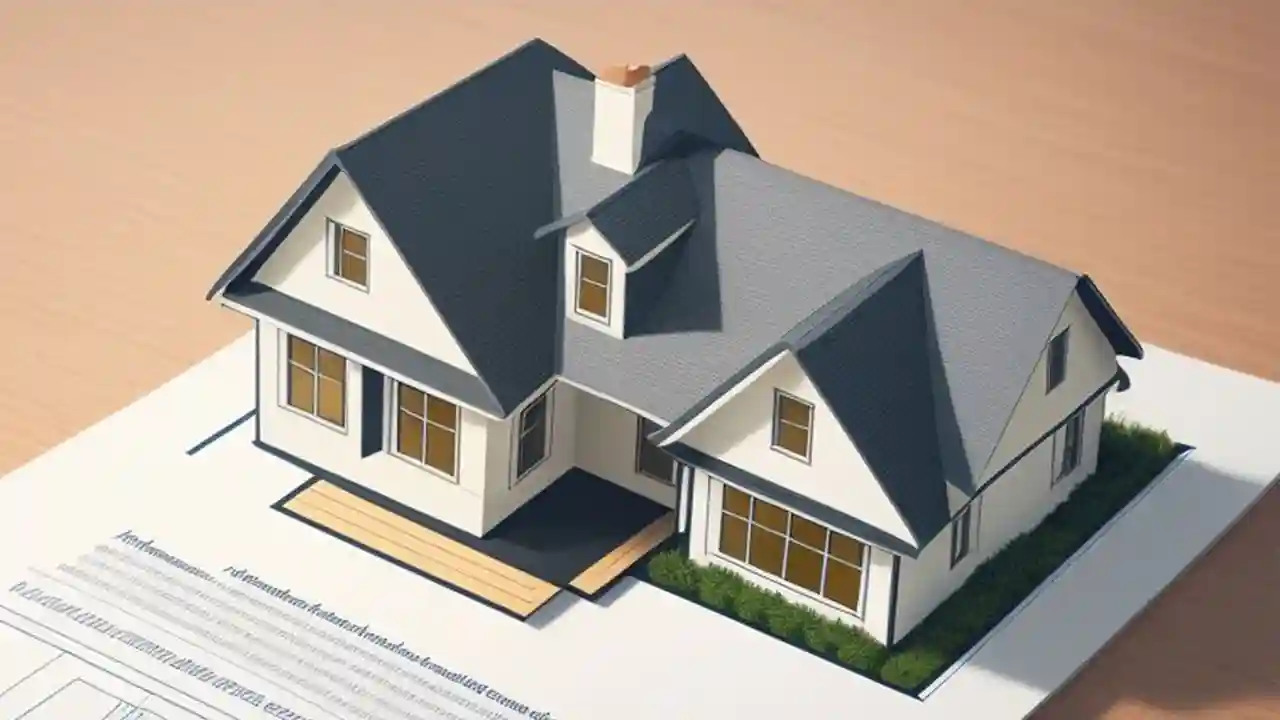Mortgagerateslocal.com – Buying a home is one of the most important decisions you will ever make. It is also one of the most expensive ones. That’s why you need to be smart and careful when choosing a mortgage loan to finance your dream home. One of the most important questions you need to answer is: what is the best mortgage payment structure for you?
A mortgage payment structure is how your monthly payments are divided. Mortgage payment structure affects how much interest you pay over the life of the loan, how fast you build equity in your home, and how flexible you are in managing your cash flow.
There are different types of mortgage payment structures, each one has its own advantages and disadvantages, and you need to weigh them carefully before making a decision.
We will explain the pros and cons of each mortgage payment structure and help you decide which one is best for you. By the end of this article, you will have a clear understanding of how to choose the best mortgage payment structure for you. Let’s get started!
What is Mortgage Payment Structure?
The payment structure is how your monthly payments are divided between the principal (the amount you borrowed) and the interest (the cost of borrowing). The payment structure affects how much interest you pay over the life of the loan, how fast you build equity in your home, and how flexible you are in managing your cash flow.
There are different types of payment structures that you can choose from, depending on your financial goals and preferences. See the explanation below:
1. Fixed-Rate Mortgage Payment Structure
A fixed-rate mortgage is the simplest and most popular type of payment structure. It means that your interest rate and monthly payment remain the same throughout the entire loan term. This gives you stability and predictability, as you know exactly how much you have to pay each month and how long it will take you to pay off your loan.
A fixed-rate mortgage is ideal for you if:
- You plan to stay in your home for a long time
- You prefer to have a consistent and fixed monthly payment
- You want to avoid the risk of rising interest rates in the future
However, a fixed-rate mortgage also has some drawbacks, such as:
- You pay more interest over the life of the loan than other payment structures
- You have less flexibility to adjust your monthly payment if your income or expenses change
- You may miss out on the opportunity to save money if interest rates drop in the future
2. Adjustable-Rate Mortgage Payment Structure
An adjustable-rate mortgage (ARM) is a type of payment structure that has a variable interest rate that changes periodically according to a market index. This means that your monthly payment can go up or down depending on the movement of interest rates.
An ARM usually has an initial fixed-rate period, followed by an adjustable-rate period. For example, a 5/1 ARM has a fixed rate for the first five years, and then adjusts every year thereafter. The adjustment is based on a formula that includes the index rate, the margin (the lender’s profit), and the rate cap (the maximum and minimum limits of the rate change).
An ARM is ideal for you if:
- You plan to sell or refinance your home before the end of the fixed-rate period
- You expect your income to increase in the future
- You want to take advantage of lower interest rates and monthly payments at the beginning of the loan
However, an ARM also has some risks, such as:
- You pay more interest over the life of the loan if interest rates rise significantly
- You have less certainty and control over your monthly payment
- You may face payment shock and financial hardship if your payment increases beyond your budget
3. Interest-Only Mortgage Payment Structure
An interest-only mortgage is a type of payment structure that allows you to pay only the interest portion of your monthly payment for a certain period of time, usually 5 to 10 years. This means that your principal balance does not decrease during this period, and your monthly payment is lower than other payment structures.
An interest-only mortgage is ideal for you if:
- You have a high and irregular income, such as commissions or bonuses
- You expect to sell or refinance your home before the end of the interest-only period
- You want to free up some cash flow to invest in other assets or pay off other debts
However, an interest-only mortgage also has some challenges, such as:
- You pay more interest over the life of the loan than other payment structures
- You have no equity in your home during the interest-only period
- You face a significant increase in your monthly payment when the interest-only period ends
4. Biweekly Mortgage Payment Structure
A biweekly mortgage is a type of payment structure that allows you to make half of your monthly payment every two weeks, instead of once a month. This means that you make 26 payments per year, instead of 12, which is equivalent to making one extra monthly payment per year. This helps you pay off your loan faster and save on interest.
A biweekly mortgage is ideal for you if:
- You want to shorten your loan term and pay less interest
- You have a stable and regular income that matches the biweekly schedule
- You want to align your mortgage payments with your paycheck cycle
However, a biweekly mortgage also has some considerations, such as:
- You have to pay more frequently and manage your cash flow accordingly
- You may incur fees or penalties from your lender for making extra payments or prepaying your loan
- You may not see the benefits of a biweekly mortgage if you have a high interest rate or a long loan term
What Is Included in a Mortgage Payment?
A mortgage payment is typically made up of four components: principal, interest, taxes, and insurance. These are often abbreviated as PITI. Let’s take a closer look at each of these components and how they affect your monthly payment.
Principal
The principal is the amount of money you borrowed from the lender to buy your home. Your principal balance is the remaining amount of your loan that you still owe. Every month, a portion of your mortgage payment goes toward reducing your principal balance. The faster you pay down your principal, the less interest you pay and the more equity you build in your home.
The amount of principal you pay each month depends on your loan term, interest rate, and loan balance. Generally, mortgages with shorter terms have higher monthly payments, but lower interest rates and less total interest paid. Mortgages with longer terms have lower monthly payments, but higher interest rates and more total interest paid.
You can use a mortgage calculator to see how different loan terms and interest rates affect your monthly payment and the total amount of interest you pay over the life of the loan. You can also see how making extra payments toward your principal can help you save money and pay off your loan faster.
Interest
The interest is the cost of borrowing money from the lender. It is expressed as a percentage of your loan balance, called the interest rate. The interest rate is determined by various factors, such as your credit score, down payment, loan type, and market conditions. The higher the interest rate, the higher your monthly payment and the more interest you pay over the life of the loan.
The amount of interest you pay each month depends on your loan term, interest rate, and loan balance. Generally, mortgages with shorter terms have lower interest rates and less total interest paid. Mortgages with longer terms have higher interest rates and more total interest paid.
You can use a mortgage calculator to see how different loan terms and interest rates affect your monthly payment and the total amount of interest you pay over the life of the loan. You can also see how making extra payments toward your principal can help you save money and pay off your loan faster.
Taxes
The taxes are the property taxes that you pay to the local government for public services and infrastructure. Property taxes are based on the assessed value of your home and the tax rate of your area. Property taxes vary widely by location and can change over time. The higher the property taxes, the higher your monthly payment.
The amount of taxes you pay each month depends on your home value, tax rate, and escrow account. An escrow account is a separate account that your lender sets up to collect and pay your property taxes and homeowners insurance on your behalf. This way, you don’t have to worry about paying large bills once or twice a year. Instead, you pay a smaller amount each month as part of your mortgage payment.
You can use a mortgage calculator to see how different home values and tax rates affect your monthly payment and the total amount of taxes you pay over the life of the loan. You can also check with your local tax assessor’s office to find out the current and projected property taxes for your area.
Insurance
The insurance is the homeowners insurance that you pay to protect your home and personal property from damage or loss due to fire, theft, natural disasters, and other hazards. Homeowners insurance is required by most lenders and is usually a condition of your mortgage. The higher the homeowners insurance, the higher your monthly payment.
The amount of insurance you pay each month depends on your home value, coverage amount, deductible, and escrow account. Your coverage amount is the maximum amount that your insurance company will pay if your home is damaged or destroyed. Your deductible is the amount that you have to pay out of pocket before your insurance company pays the rest. Your escrow account is the separate account that your lender sets up to collect and pay your property taxes and homeowners insurance on your behalf.
You can use a mortgage calculator to see how different home values, coverage amounts, and deductibles affect your monthly payment and the total amount of insurance you pay over the life of the loan. You can also shop around and compare quotes from different insurance companies to find the best deal for your needs and budget.
The Amortization Schedule
An amortization schedule is a table that shows how your loan balance changes over time as you make monthly payments. It also shows how much of each payment goes toward the principal and how much goes toward the interest. An amortization schedule can help you understand how your loan works and how to plan your budget.
You can use an online amortization calculator to create an amortization schedule for your loan. You just need to enter the loan amount, the interest rate, the loan term, and the start date. The calculator will then generate a table that shows the payment number, the payment amount, the interest amount, the principal amount, and the remaining balance for each month.
You can also use the following formula to calculate the monthly payment amount for a fixed-rate loan:
P = rA : 1 – (1 + r)-n
where:
- P is the monthly payment amount
- r is the monthly interest rate (annual interest rate divided by 12)
- A is the loan amount
- n is the number of monthly payments (loan term in years multiplied by 12)
For example, suppose you borrow $200,000 at a 6% annual interest rate for 15 years. The monthly interest rate is 0.06 / 12 = 0.005. The number of monthly payments is 15 x 12 = 180. Using the formula, the monthly payment amount is:
P = 0.005 x 200,000 : 1 – (1 + 0.005)-180
P = 1,301.37
This means that you have to pay $1,301.37 every month for 15 years to pay off your loan. The amortization schedule for the first year of your loan looks like this:
| Payment Number | Payment Amount | Interest Amount | Principal Amount | Remaining Balance |
|---|---|---|---|---|
| 1 | $1,301.37 | $1,000.00 | $301.37 | $199,698.63 |
| 2 | $1,301.37 | $998.49 | $302.88 | $199,395.75 |
| 3 | $1,301.37 | $996.98 | $304.39 | $199,091.36 |
| 4 | $1,301.37 | $995.46 | $305.91 | $198,785.45 |
| 5 | $1,301.37 | $993.93 | $307.44 | $198,478.01 |
| 6 | $1,301.37 | $992.39 | $308.98 | $198,169.03 |
| 7 | $1,301.37 | $990.85 | $310.52 | $197,858.51 |
| 8 | $1,301.37 | $989.29 | $312.08 | $197,546.43 |
| 9 | $1,301.37 | $987.73 | $313.64 | $197,232.79 |
| 10 | $1,301.37 | $986.16 | $315.21 | $196,917.58 |
| 11 | $1,301.37 | $984.59 | $316.78 | $196,600.80 |
| 12 | $1,301.37 | $983.00 | $318.37 | $196,282.43 |
As you can see, the interest amount decreases and the principal amount increases with each payment. This means that you pay less interest and more principal over time, which reduces your loan balance faster.
You can also see how making extra payments can affect your amortization schedule. For example, if you pay an extra $100 every month starting from the first payment, your amortization schedule for the first year looks like this:
| Payment Number | Payment Amount | Interest Amount | Principal Amount | Remaining Balance |
|---|---|---|---|---|
| 1 | $1,401.37 | $1,000.00 | $401.37 | $199,598.63 |
| 2 | $1,401.37 | $997.99 | $403.38 | $199,195.25 |
| 3 | $1,401.37 | $995.98 | $405.39 | $198,789.86 |
| 4 | $1,401.37 | $993.95 | $407.42 | $198,382.44 |
| 5 | $1,401.37 | $991.91 | $409.46 | $197,972.98 |
| 6 | $1,401.37 | $989.86 | $411.51 | $197,561.47 |
| 7 | $1,401.37 | $987.81 | $413.56 | $197,147.91 |
| 8 | $1,401.37 | $985.74 | $415.63 | $196,732.28 |
| 9 | $1,401.37 | $983.66 | $417.71 | $196,314.57 |
| 10 | $1,401.37 | $981.57 | $419.80 | $195,894.77 |
| 11 | $1,401.37 | $979.47 | $421.90 | $195,472.87 |
| 12 | $1,401.37 | $977.36 | $424.01 | $195,048.86 |
As you can see, the extra payments reduce your loan balance faster and save you interest. In fact, by paying an extra $100 every month, you can pay off your loan in 13 years and 4 months instead of 15 years, and save $14,867.64 in interest.
Conclusion
Choosing a mortgage payment structure is a crucial decision that affects your financial situation and your homeownership experience. You should consider your goals, preferences, and circumstances, and compare the pros and cons of each option.




